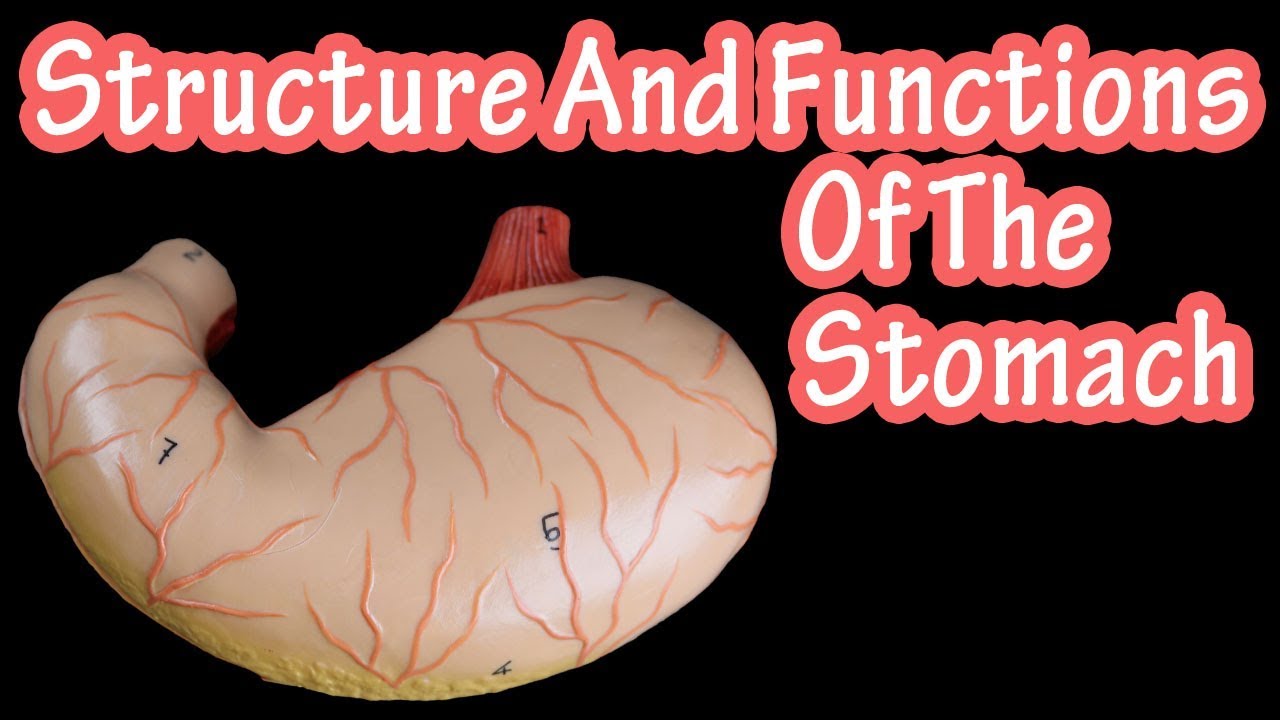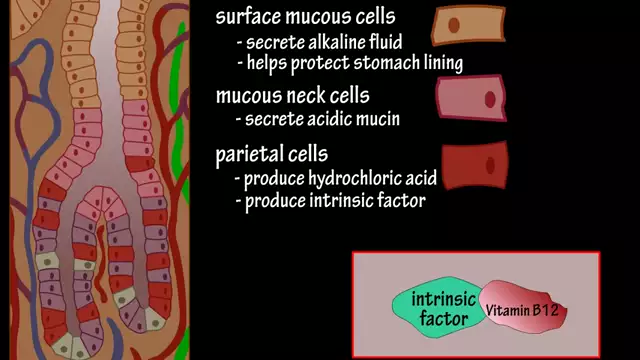Structure Of The Stomach - Functions Of The Stomach - How Does The Stomach Work
In this video we discuss the structure of the stomach and the functions of the stomach. We cover the sections of the stomach and the different cells that make up the gastric pits in the stomach.
Transcript/notes
Stomach
Your stomach is an organ that has many important roles in bodily functions. The stomach is like a holding sack as between 3 to 4 liters of food and drink enters it daily. These items typically spend 2 to 6 hours there before being passed on to the small intestine.
The stomach is a J shaped organ located in the abdomen. When you chew food, then swallow it, it enters your esophagus, which connects with and passes the food to your stomach.
The stomach is typically divided into 4 sections. The Cardia is the entryway to the stomach, near where the stomach and esophagus meet. The Fundus is the dome shaped region located above and to the left of where the stomach and esophagus meet.
The body is the largest region of the stomach and it extends to the 4th section of the stomach, the pylorus. The pylorus is a funnel shaped region that connects the stomach to the duodenum of the small intestine.
The inner lining of the stomach has a rough appearance made by gastric folds. These gastric folds have gastric pits which contain gastric glands. These glands secrete most of the gastric juice released in the stomach and this juice is a mucous fluid that contains mainly digestive enzymes and hydrochloric acid.
There are 5 types of secretory cells that are located in the gastric epithelium.
Surface mucous cells line the inner stomach and extend into the gastric pits and they secrete an alkaline fluid containing mucin that helps protect the stomach lining from exposure to the high acidity of gastric juices and gastric enzymes.
Mucous neck cells are located deeper than the surface cells and they secrete an acidic mucin and which helps to maintain acidic conditions.
Parietal cells produce hydrochloric acid and intrinsic factor. Intrinsic factor binds to vitamin B12 molecules and protects them from digestive juices until they reach the small intestine.
Hydrochloric acid is not actually produced in the cells, as it forms form positive hydrogen ions and negative chlorine ions secreted from the cells. Hydrochloric acid is responsible for the low pH level in the stomach. Hcl is important in enzyme activation, unfolding certain proteins and it also protects against many microorganisms.
Chief cells produce pepsinogen, which is the precursor to the enzyme pepsin. Pepsin is activated by hydrochloric acid in the stomach, and it digests or breaks down proteins into smaller peptide fragments. Chief cells also produce gastric lipase which is an enzyme that aids in the digestion of fats.
G cells release gastrin into blood, which stimulates the production of hydrochloric acid and pepsinogen, ensuring that there are enough digestive enzymes when food is present in the stomach.
The outer stomach wall is comprised of 3 layers of smooth muscle tissue, an oblique muscle layer, a circular muscle layer, and a longitudinal layer, with a serosa being the outermost layer.
The stomach has several important functions in your body, as it serves as a food reservoir, storing food until it can be moved into the small intestine. As we have covered, it releases gastric juice, which contains enzymes that take part in the digestion of food. The stomach actually churns food, breaking it down into smaller particles and mixing them with the gastric juice. It secretes intrinsic factor, which protects vitamin B12 molecules, which are important in cell metabolism. The stomach absorbs some alcohol, aspirin, and some short chain fatty acids. And the stomach produces gastrin to help regulate digestive functions.

 0:03:44
0:03:44

 0:03:44
0:03:44
